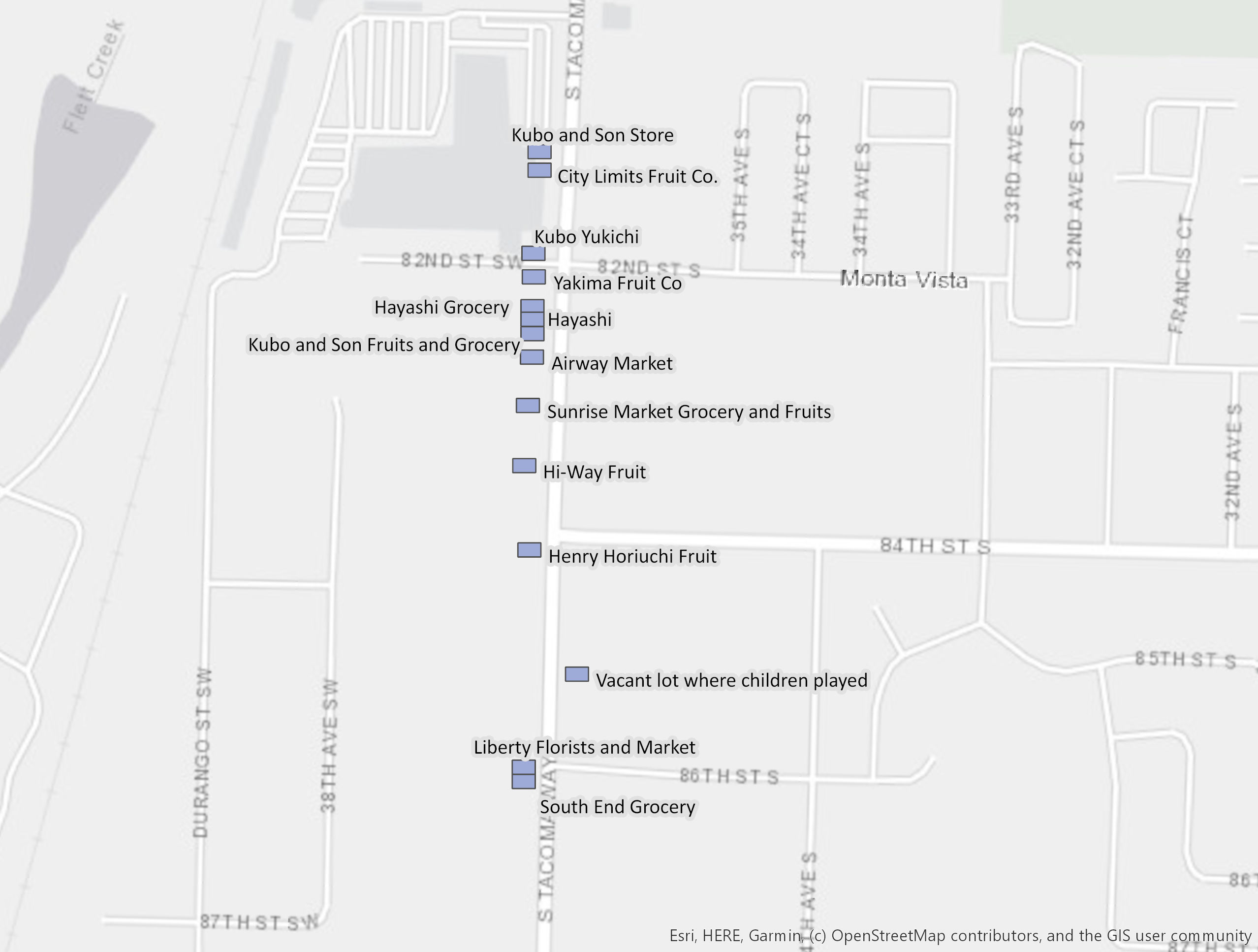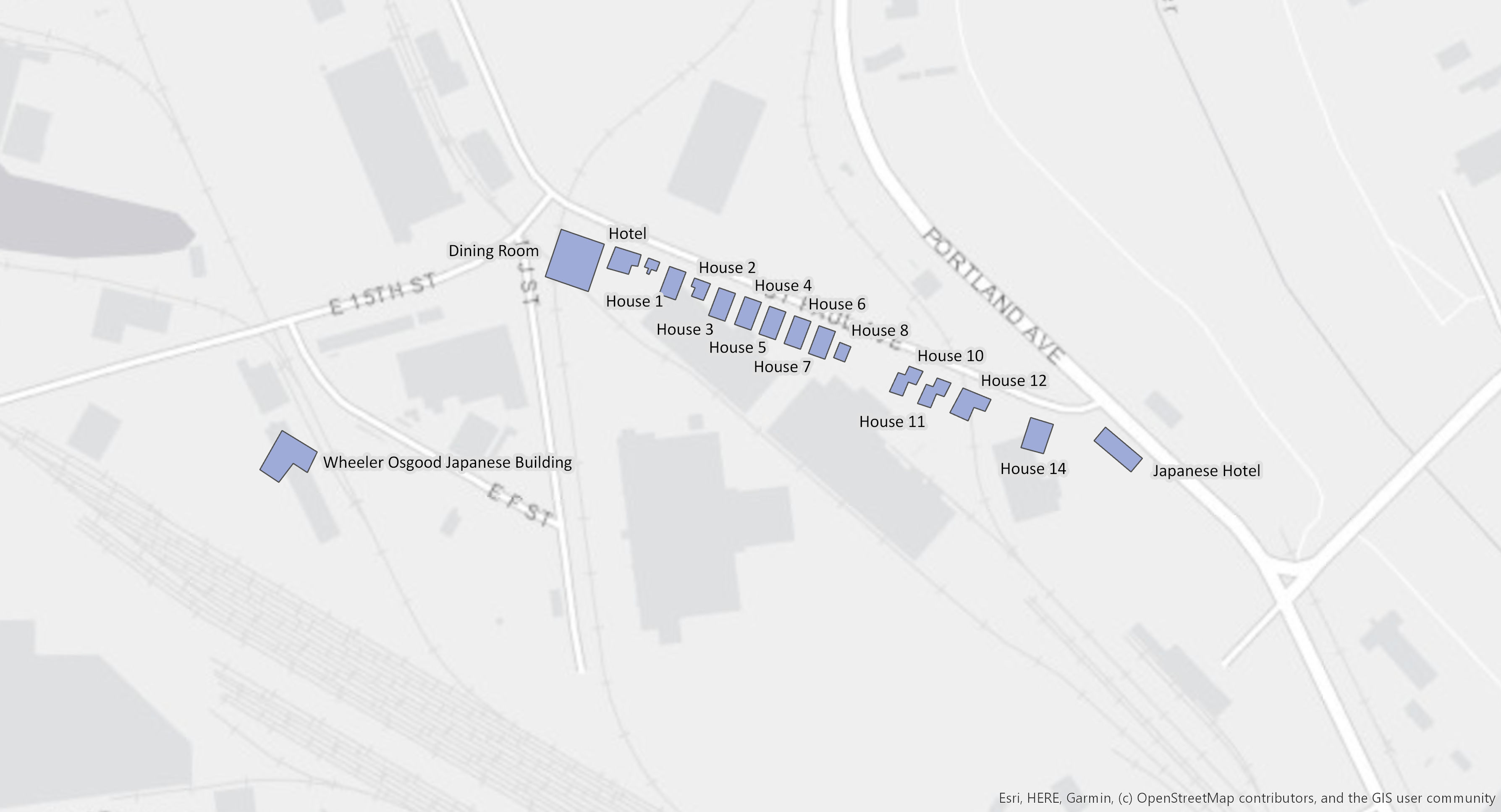Background
This research is part of a larger historical project called the Japanese Language School project. It’s being conducted at the University of Washington, Tacoma by Dr. Lisa Hoffman and Dr. Mary Hanneman (see Hoffman & Hanneman 2019 forthcoming). In the early 2000s Hoffman and Hanneman conducted interviews with 42 former students of the JLS. At the time of the interviews the former students were elderly. These JLS students were primarily from the Nisei (the first Japanese American) generation of Japanese Americans and their parents from the Issei (Japanese immigrant) generation.
Prior to WWII Tacoma’s Japanese Language School (Nihongo Gakko) was a cultural, social, and education center for children and families of Tacoma’s Japantown. The school educated children on ethics (shushin) and the Japanese language and culture (Hoffman & Hanneman 2019, 14). Following the internment of Japanese Americans during WWII, few families returned to Tacoma. The JLS was eventually closed and was later purchased by Tadaye (Fujimoto) Kawasaki in the late 1940s with hopes to reopen the language school (HABS No. WA-209, 12). In 1993 the University of Washington purchased the Language School in order to develop the Tacoma satellite campus. The original intent was to renovate the building to meet safety standards, but an architectural assessment shows that the necessary repairs would impede the building from being historically registered (13). Consequently, the building was demolished. In 2019 the lot rests in limbo as a field of grass with the original two trees that once guarded the school’s front door still standing. The consequences of tearing down the building spurred local research into Tacoma’s Japantown history.
This Project
In conducting this research, the project attempts to add new information to Japanese American history. Typically their history focuses on their incarceration during WWII. This focus makes sense because it was a traumatic experience. However, by solely focusing on internment, people lose an understanding of what early Japanese American culture was actually like. There is no understanding of their daily lives, values, traditions, celebrations, or perspectives. Choosing to remember the events that happened to them as a result of racism continues to play into the prejudiced narrative that the U.S. government was pushing during the war. Instead, history needs to remember how they lived based on the actions they took of their own accord. In order to properly acknowledge the trauma that Japanese Americans endured the U.S. needs to acknowledge what was lost. Solely apologizing for incarceration makes little attempt to understand and apologize for what was lost during the incarceration years. A proper understanding of the effects of incarceration cannot be measured without remembering the daily lives of Japanese Americans prior.
Project Abstract
Japanese American history has largely been forgotten, yet when their history is remembered, it typically focuses on their incarceration and upsetting experiences during WWII. It’s understandable to focus on these traumatic events. Some 120,000 people were removed from their homes, schools, and businesses when President Theodore Roosevelt signed Executive Order 9066 on February 19, 1942. However, only focusing on this aspect of Japanese American experience works to erase the history of their everyday lives. In Tacoma, few know about the lively Japanese community that flourished downtown less than 100 years ago. Yet, they walk down the same sidewalks and drive down the same streets. Researching Japanese American history expands the narrative of Japanese American history beyond the war. Discovering new information is a way to give understanding to current and future generations. This project focuses on illuminating the elided history of Japanese American everyday lives and experiences through an exploration of the Japanese community that was present in Tacoma, Washington before the war.
In order to expand the narrative of Japanese American history in Tacoma this project conducted research into the spatiality of the community. This research includes sorting through local history books, transcribed interviews, photographs, city directories, and maps. Through this research, spatial data was created by digitizing in a GIS and resulted in 4 web-maps created using the Leaflet JavaScript library. This analysis expands previous understandings that Japanese Americans only lived in the downtown area, when they in fact lived throughout the city.


